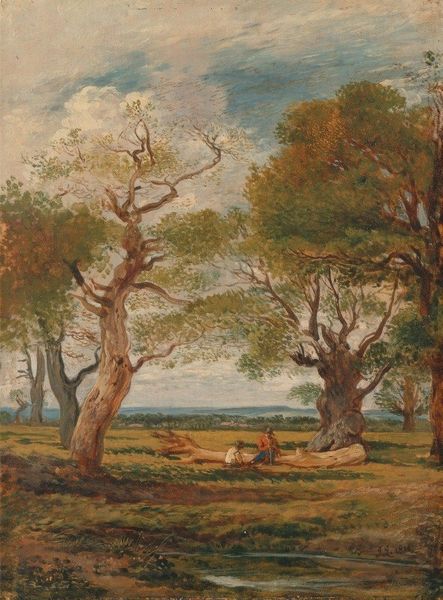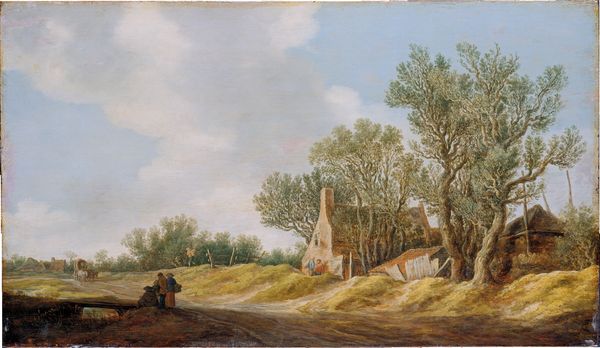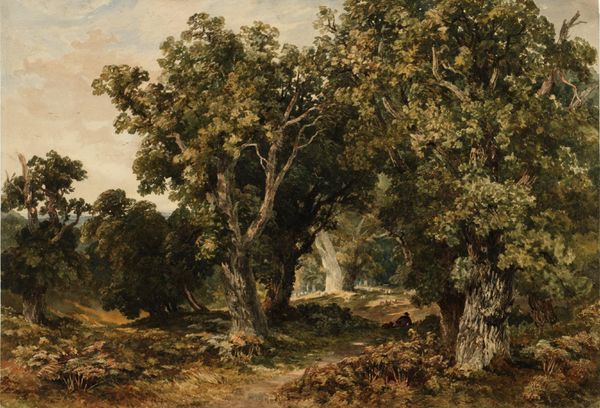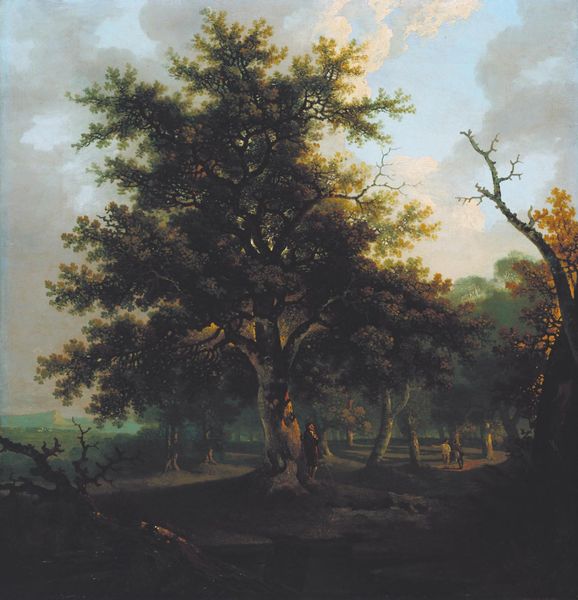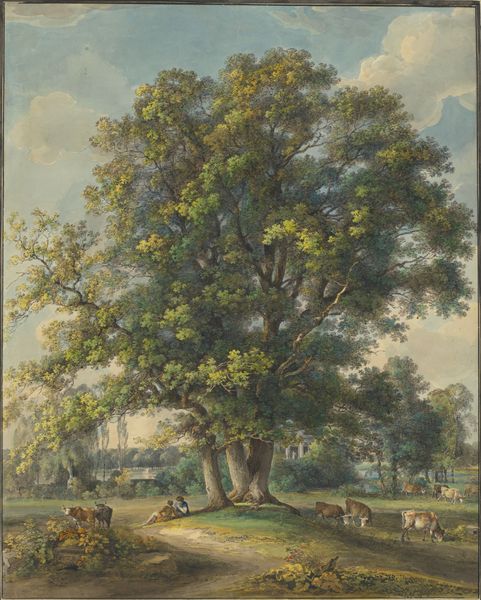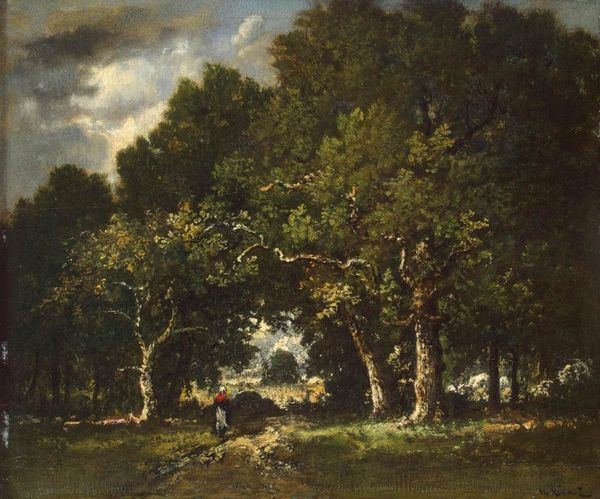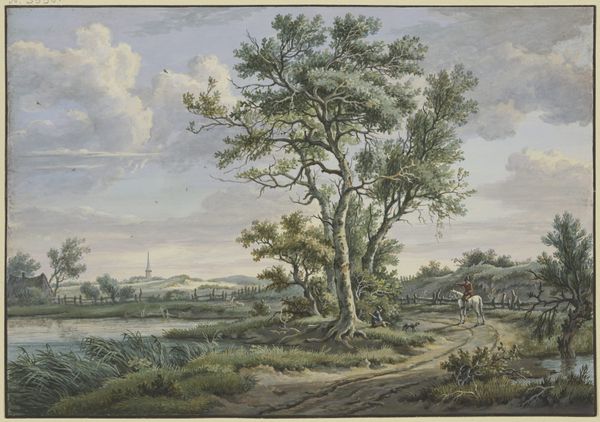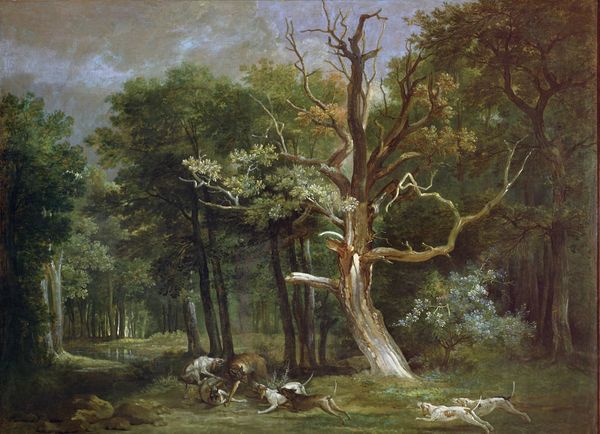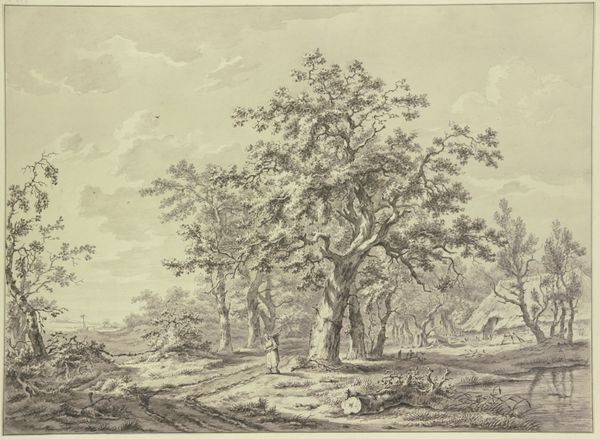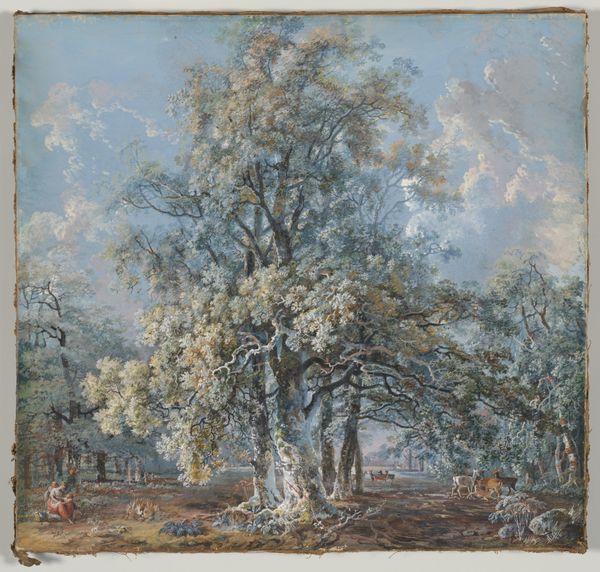
#
abstract painting
#
landscape
#
impressionist landscape
#
possibly oil pastel
#
oil painting
#
fluid art
#
acrylic on canvas
#
underpainting
#
painting painterly
#
watercolour illustration
#
watercolor
Copyright: Public Domain: Artvee
Curator: Looking at this piece, I’m struck by its palpable stillness and melancholy. There's a profound sense of solitude radiating from the lone oak. Editor: This is believed to be James Ward's "An oak tree in Richmond Park with a herd of fallow deer beside it." Richmond Park, of course, carries a weighty history as a former royal hunting ground and a stage for various social and political dramas. Curator: That history certainly resonates. The image of the gnarled oak immediately suggests resilience, almost defiance against time, but also a feeling of being weathered, even wounded. It also reminds me of older symbols of druidic royalty. Editor: I agree. The hollow trunk feels symbolic – a container of stories and experience. Even the herd of deer contributes; traditionally deer were symbols for spiritual authority and noble action. I wonder if Ward used these animals deliberately? Curator: Ward likely was influenced by contemporary debates around land ownership and access. Enclosures of common land, and the related restrictions on hunting and grazing, were major social concerns. Placing the Oak, a very "British" tree, might make it an emblem of English national identity against the march of so-called Progress and it's impact on natural, rural spaces. Editor: I’m seeing an allegorical rendering about cultural identity through ecological awareness. Also I notice how skillfully he contrasts the massivity of the ancient tree with the relative slenderness of the deer in the distance and with a sense of depth despite his flattening and use of similar color tones. It gives them more contrast, adding weight to their meaning. Curator: That’s perceptive. Ward’s rendering, I think, provides space to confront the realities of land use, social injustice, or perhaps it simply illustrates the picturesque taste for rustic natural scenes popular at the time, allowing his wealthy patrons to feel like lords in possession of such sights, even without social consciences. Editor: Looking at this piece now, it has layers that seem to blend the ecological with the cultural to produce complex views. I can now see its significance with greater clarity, too.
Comments
No comments
Be the first to comment and join the conversation on the ultimate creative platform.
